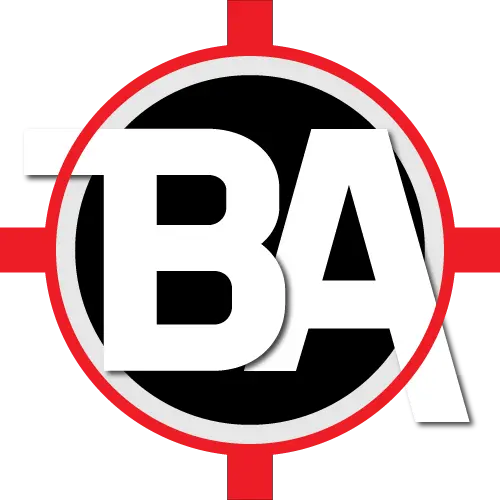
Getting into business analysis? It starts with eliciting requirements from stakeholders for their business needs.
This article shares valuable insights and experiences in understanding business needs, the requirement elicitation phase including various techniques, and the anatomy of the requirement elicitation process.
Understanding Business Needs or Business Requirements #
It is the first step for a business analyst to fully understand the business needs, objectives, and goals.
The top-level stakeholders of a business division (e.g. Director of Corporate Banking, Product Manager of a business product offering) do strategic analysis and come up with a set of business needs and high-level solutions to achieve a specific business goal.
The business needs, objectives, and goals are often provided in the form of an official “Business Case” Document or “Business Requirements Document” (BRD). This document serves as a basis to initiate the changes in impacted software applications along with other important details.
Here is an example of a business need or business requirement: “Currently, our client onboarding process is manual and it takes about a week to onboard a client to our system. We want to automate the client onboarding process to make it faster, more efficient, and digitized to reduce manual effort as well as to enhance the customer experience.”
However, this business requirements document cannot be used as is to make changes in software since it only tells “What” needs to be done from the business perspective.
It is the task of a Business Analyst to understand the Business Requirements and initiate the process of Requirement Elicitation to derive software requirements for each business need/business requirement i.e. What are the changes to be done in software to fulfill a business need?
For the same above-mentioned example of a business requirement to automate the client onboarding process, a business analyst discusses it in detail with the stakeholders as part of the Requirement Elicitation Process and defines the software requirements i.e. what changes to be done in software to automate the client onboarding process.
What is Requirement Elicitation in Business Analysis? #
Requirement elicitation or Requirement gathering means to draw out (or define) the software requirements from the business stakeholders to fulfil the given business needs/requirements.
It is a key task for any Business Analyst since the software requirements serve as the foundation for the solution to business needs.
It’s required to actively engage all impacted stakeholders in defining the requirements. Leveraging proven means to elicit requirements will help meet quality goals.
The outcome of Requirement Elicitation is the list of software requirements that are complete, clear, correct, and consistent.
Requirement Elicitation Techniques #
Let’s understand the different techniques for eliciting Business, Stakeholder, Solution or Transition requirements.
A business analyst should understand the commonly used techniques to elicit requirements, should be able to select appropriate technique(s) for a given situation, and be knowledgeable of the tasks needed to prepare, execute and complete each technique.
Several factors (the business domain, the corporate culture and environment, the skills of the analyst and the requirements deliverables that will be created) guide which techniques will be used.
The following are the most commonly used techniques to elicit the requirements:
| Elicitation Technique | Type | Summary |
|---|---|---|
| Brainstorming | Event Based | Derive ideas/solutions through group discussions/debates |
| Workshops | Event Based | Elicitation Workshop, Facilitated Workshop |
| Interviews | Event Based | 1 - 1 or Group interviews |
| Observation | Event Based | Job Shadowing |
| Survey / Questionnaire | Event Based | Conducting online/offline surveys, polling |
| Prototyping | Activity Based | Storyboarding, navigation flow, paper prototyping, screen flows, wireframes |
| Document Review / Analysis | Activity Based | Review & Analyze Existing Documentation |
| Interface Analysis | Activity Based | Analyzing external interfaces |
Anatomy of Requirement Elicitation Process #
It’s a 3-step process to elicit requirements using any of the above-mentioned requirement elicitation techniques.
1. Prepare for Elicitation #
Prepare necessary information, data, agenda, questions etc. before commencing a selected requirement elicitation technique.
Each technique has different preparation activities.
This step helps to set the stage and communicates clear objectives of the requirement elicitation session.
2. Conduct Elicitation #
Conduct the actual Requirement Elicitation Session according to the selected technique.
Again, each technique has different practices and rules to follow while the requirement elicitation session is ongoing.
At the end of this step, a business analyst will have a set of elicited software requirements, and their proposed solutions, and there may be a few open items for which a follow-up session needs to be conducted to clarify them.
3. Conclude Elicitation #
Conclude the elicitation process by compiling and sending the elicitation results to all the participants for confirmation.
This step helps to confirm the elicited requirements and keeps everyone on the same page to avoid any misunderstanding.
Conclusion #
Requirements are the Keys to Success for an IT Project if they are Clear and Well-Defined!
Requirement Elicitation Techniques help a Business Analyst to effectively elicit crystal-clear requirements from the stakeholders and other sources.
If you would like to learn How to Elicit Requirements Effectively for IT projects, explore our comprehensive course that explains the basics of requirements and dives deep into each Requirement Elicitation Technique with it’s use cases, step-by-step process, tools, real-world examples and best practices to help you learn and apply these techniques to your next IT projects.
Don’t Let Unclear Requirements Derail Your Project. Enroll Now and Become a Master of Requirement Elicitation!

